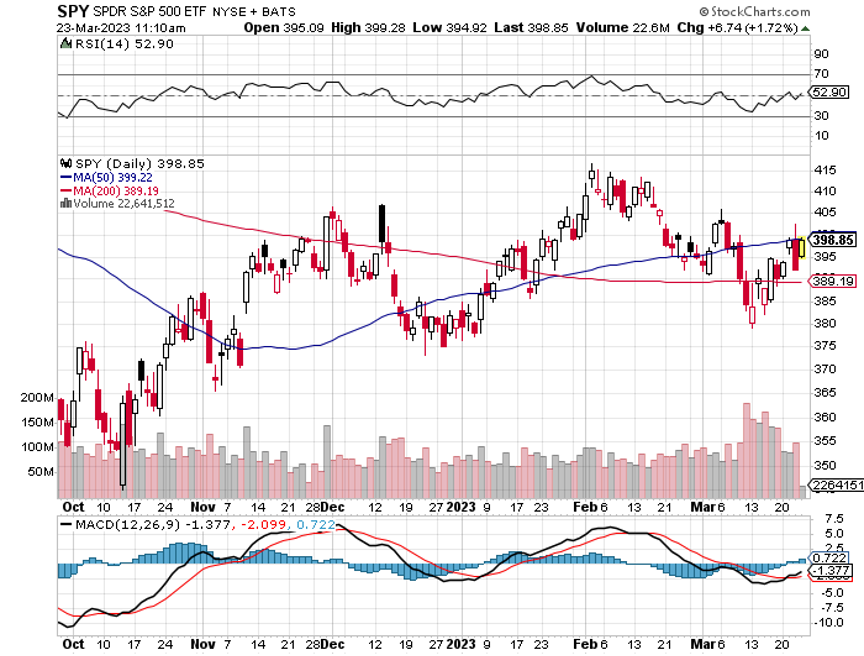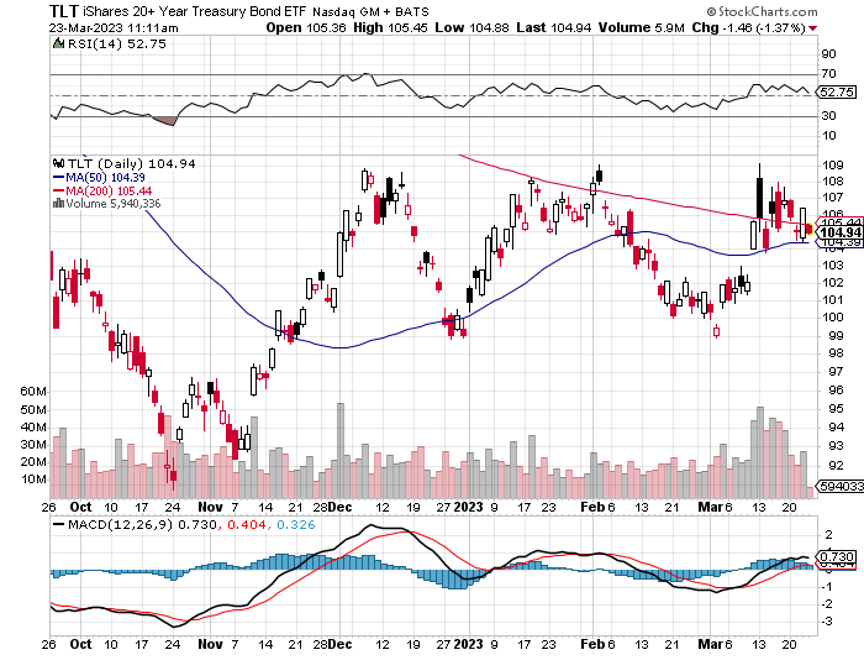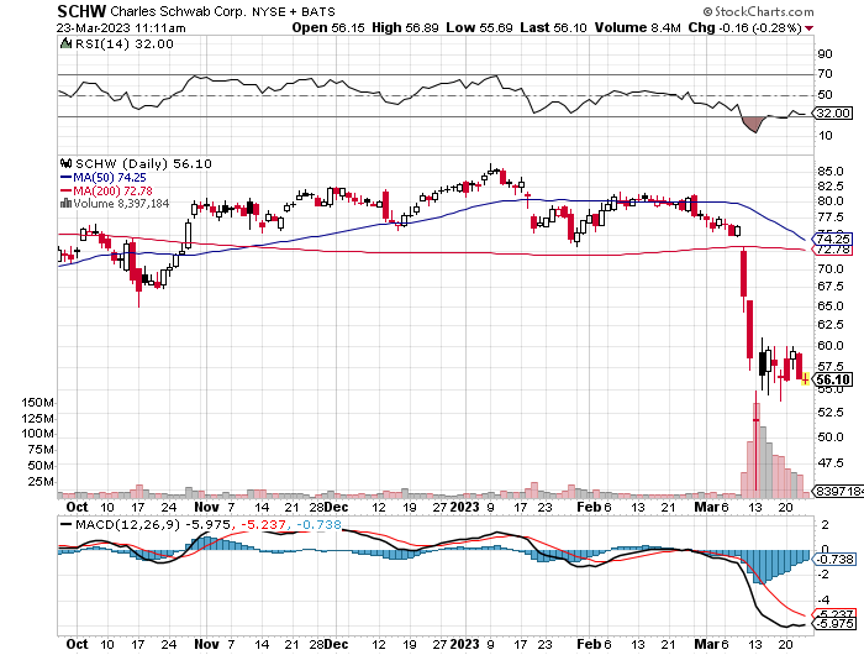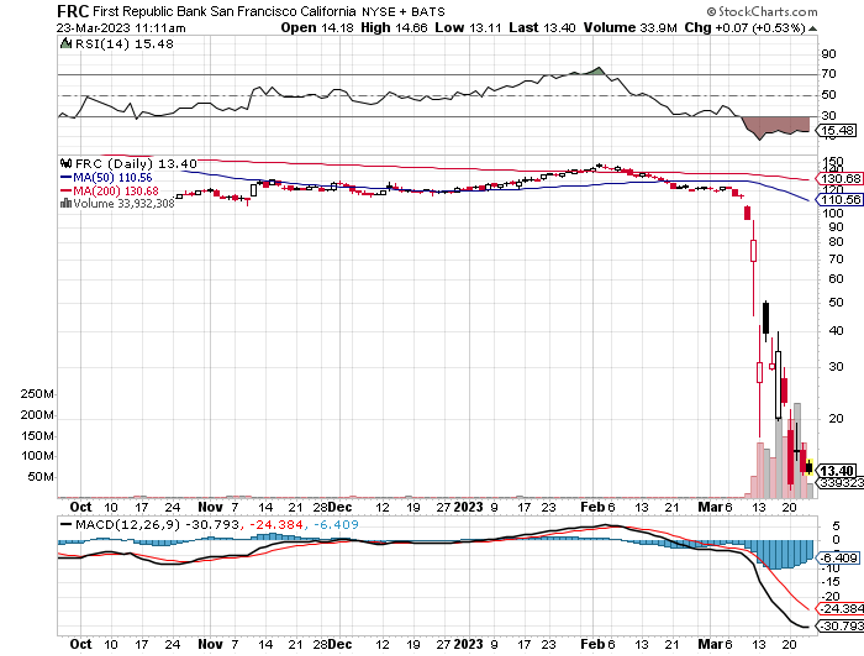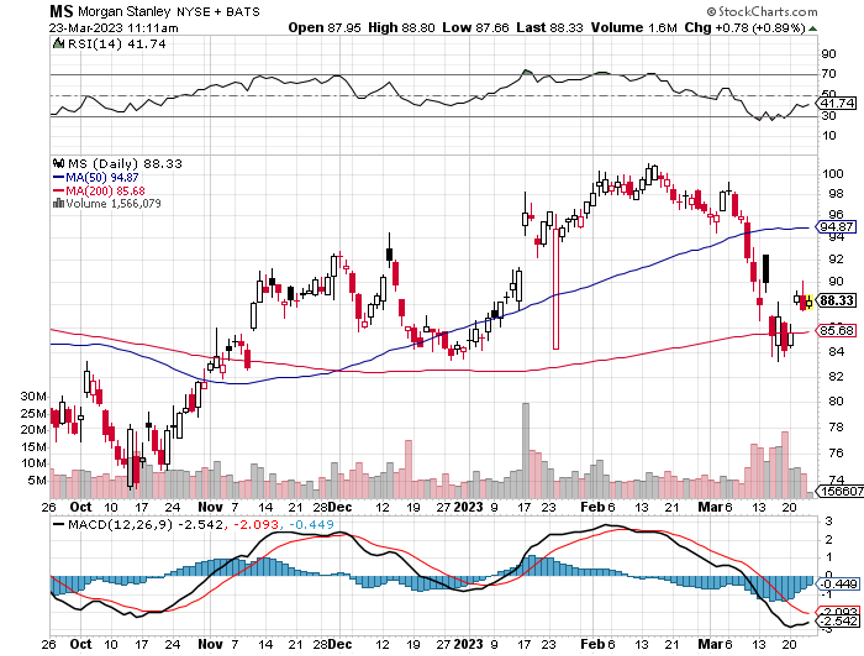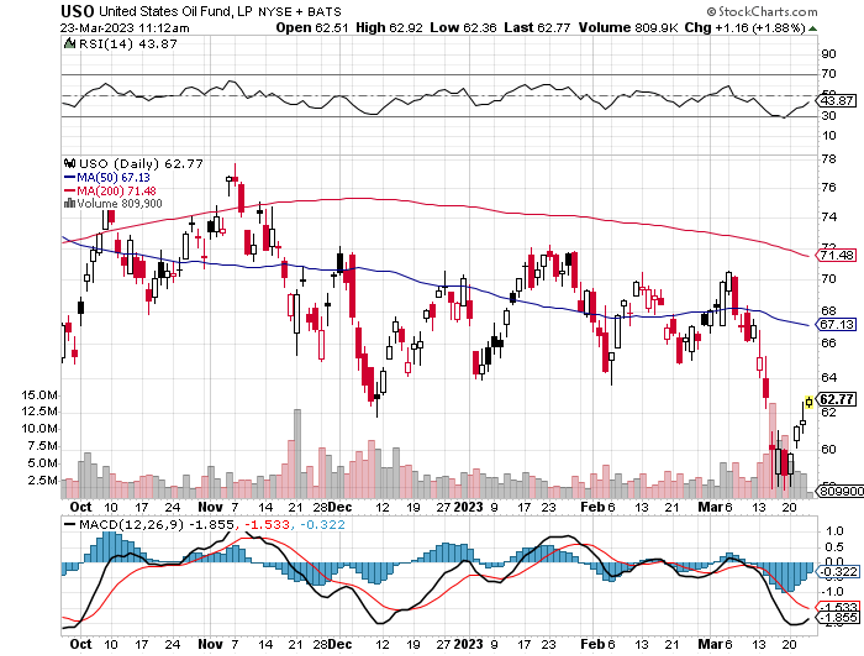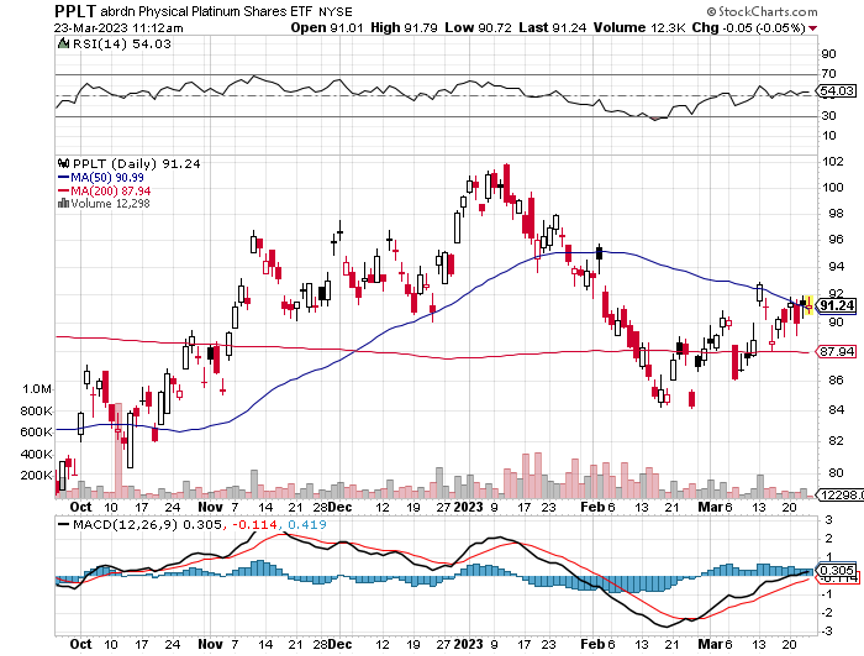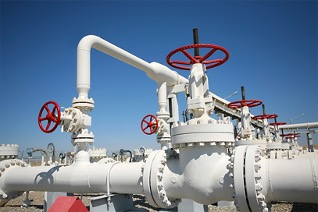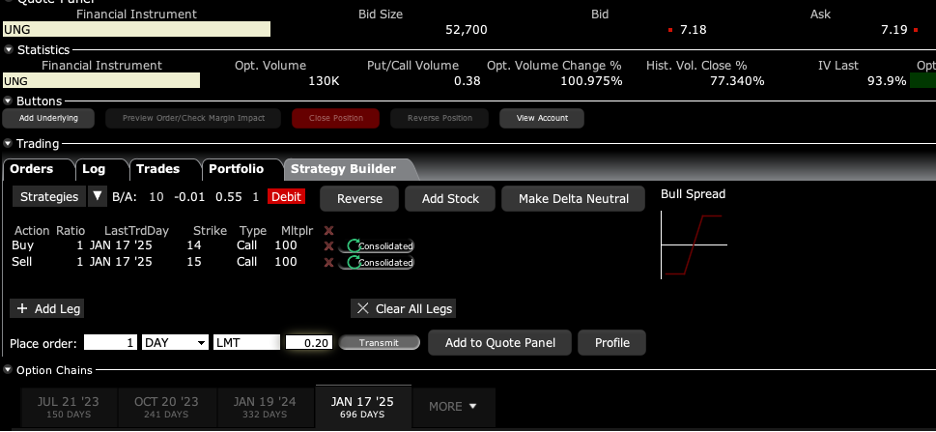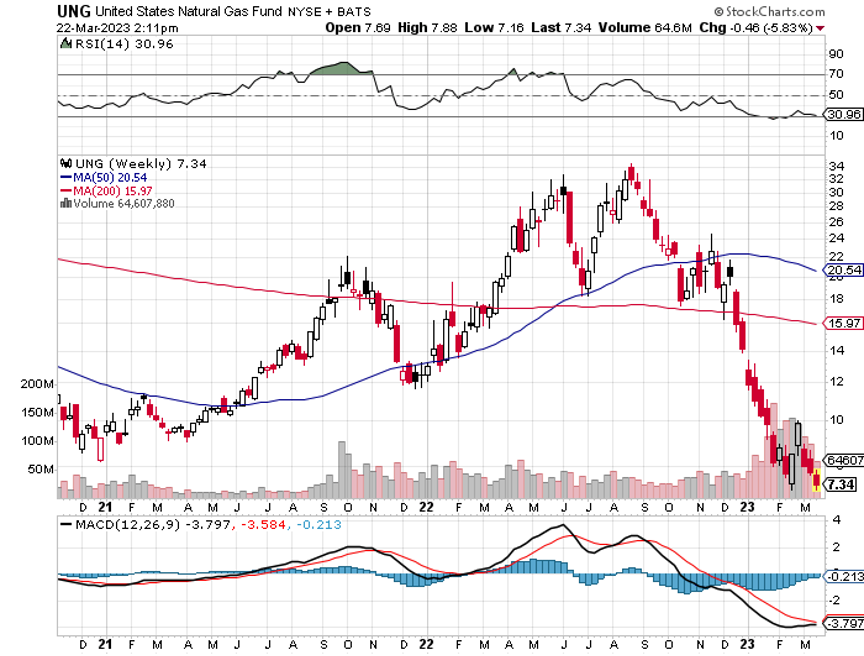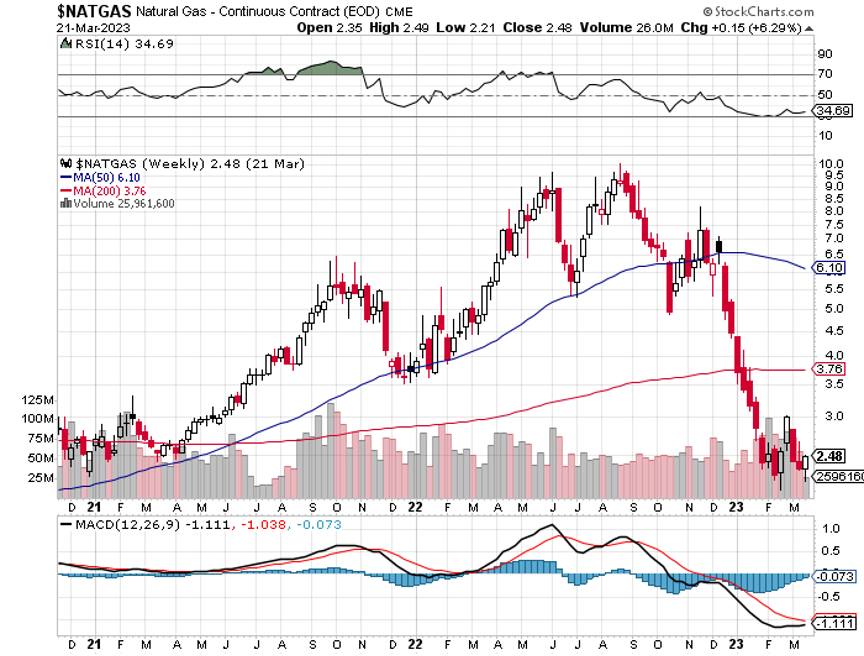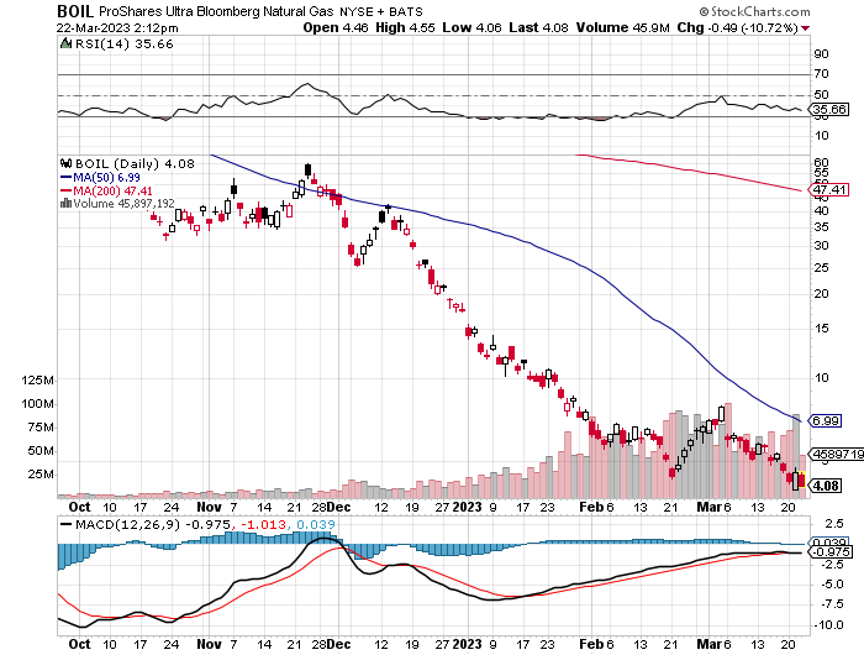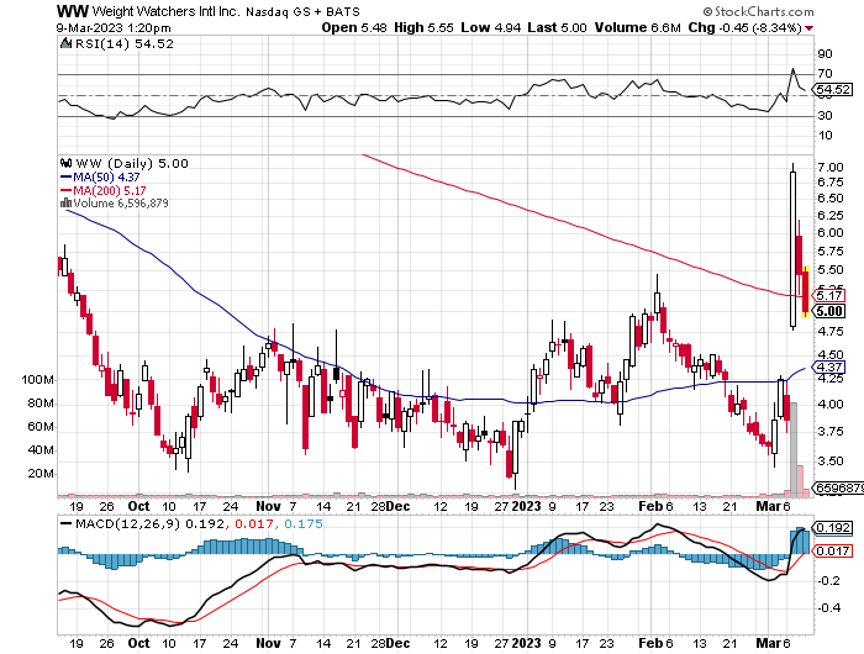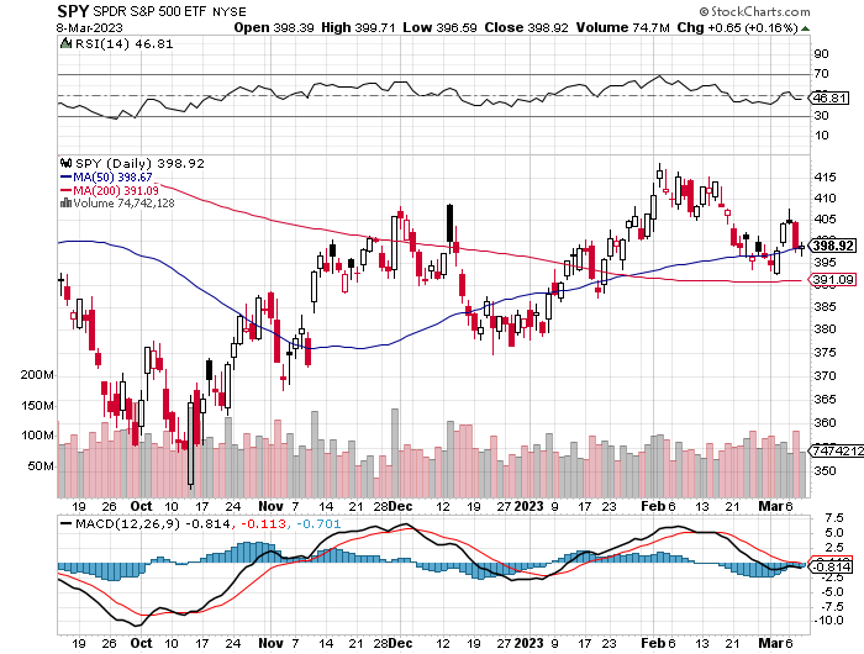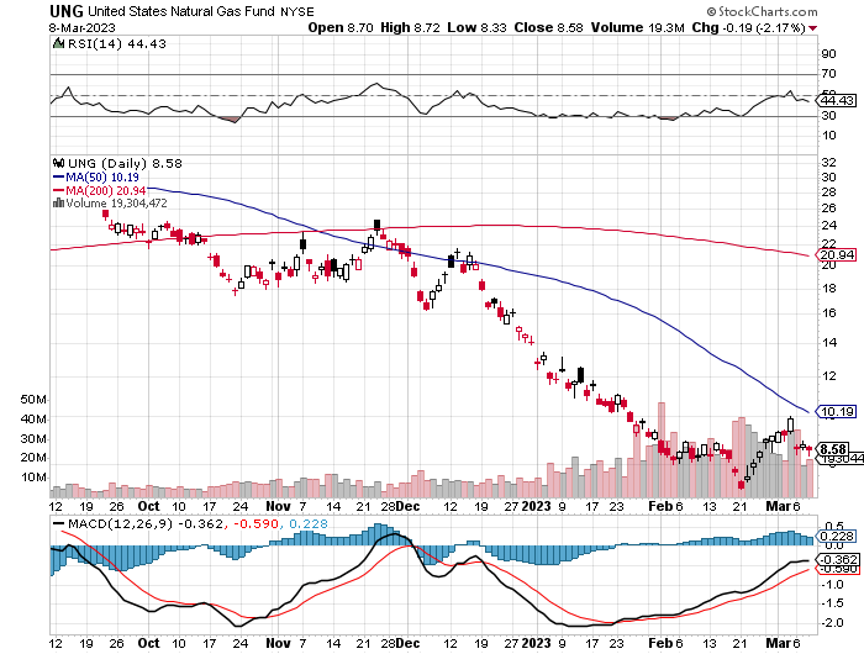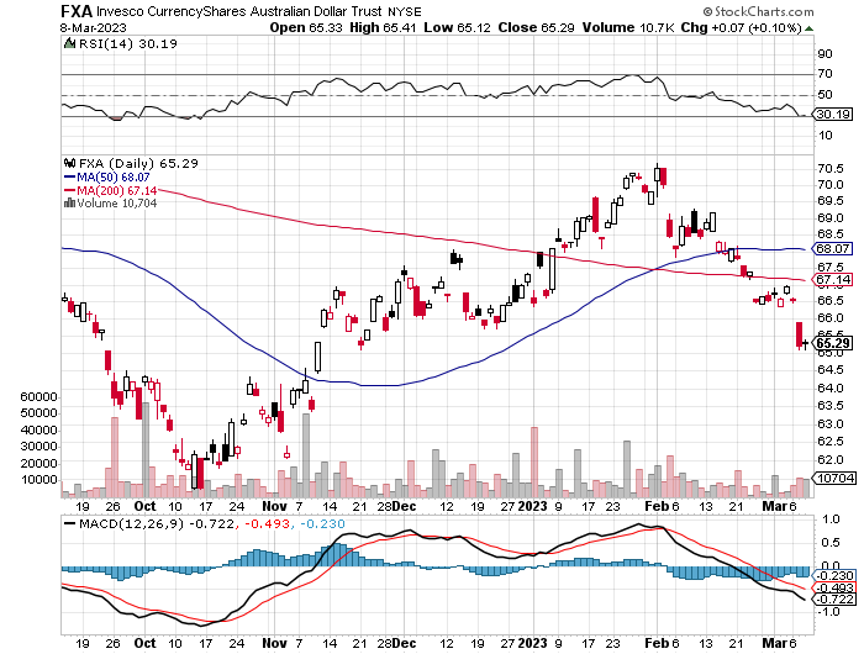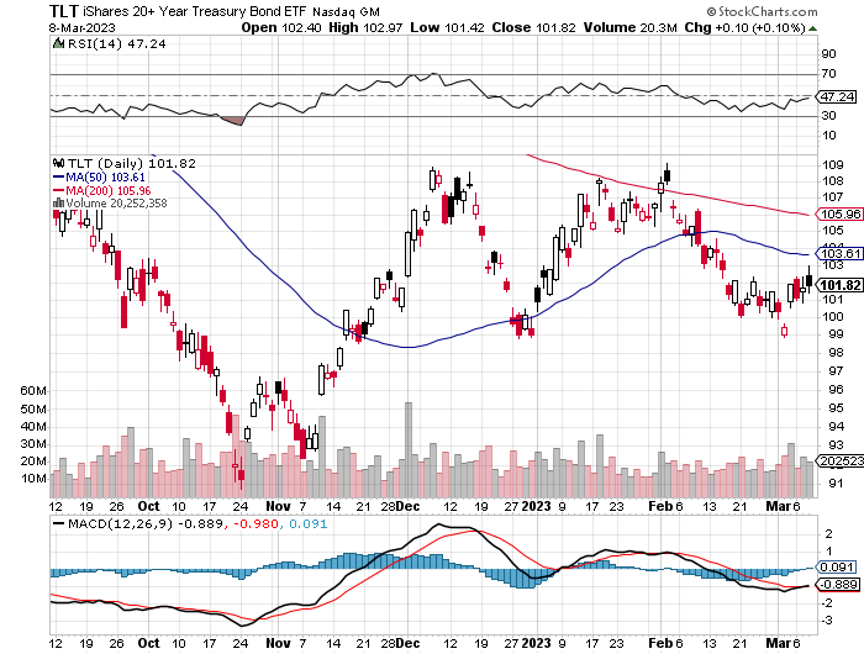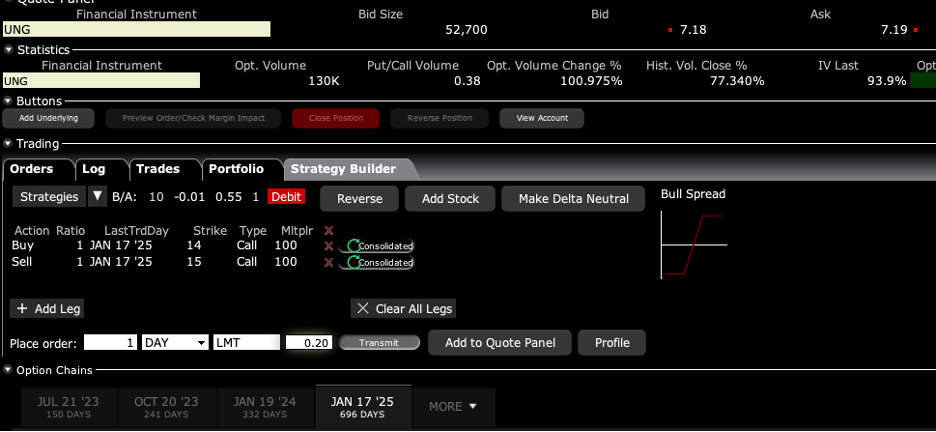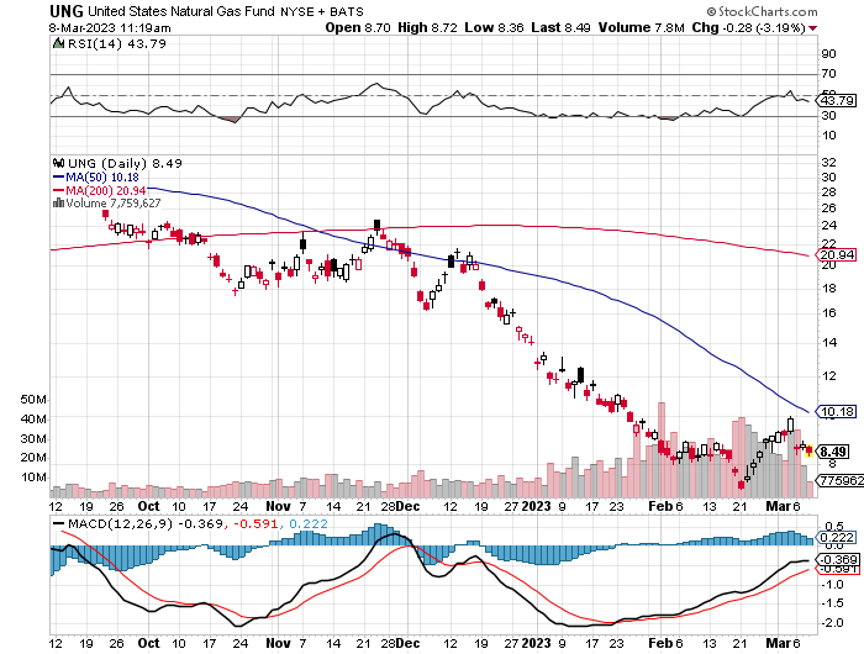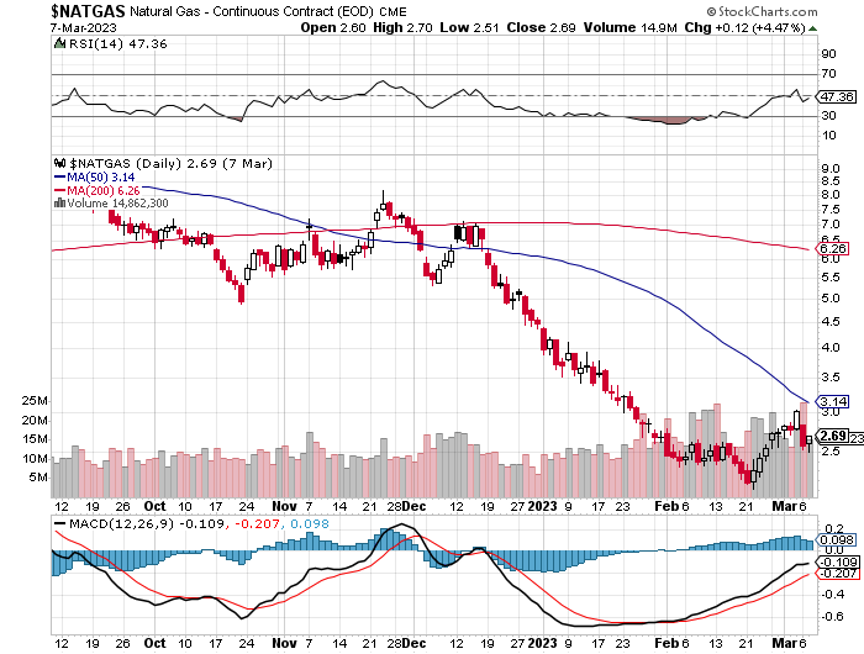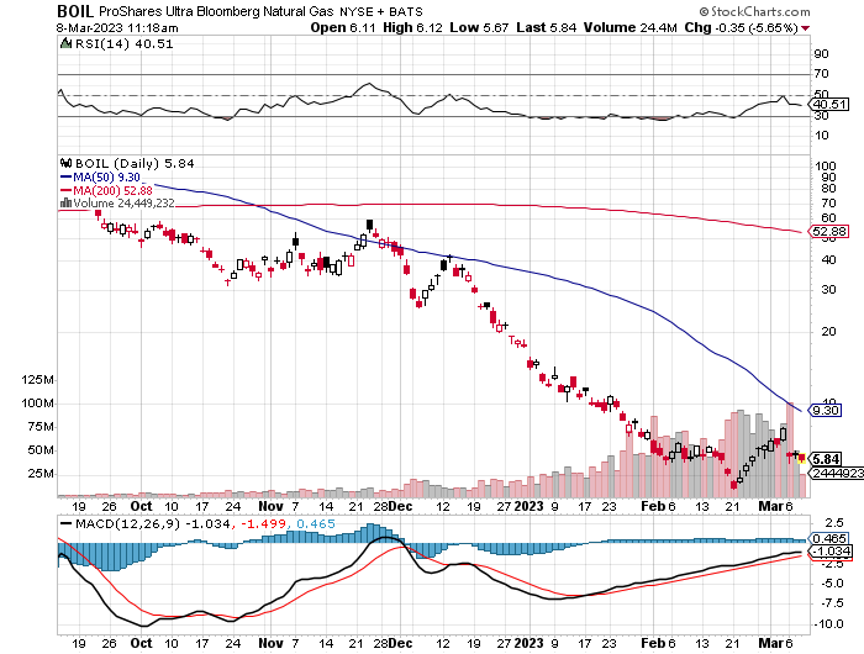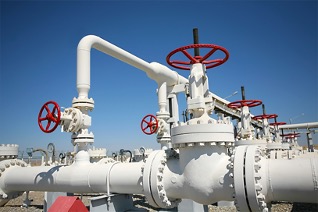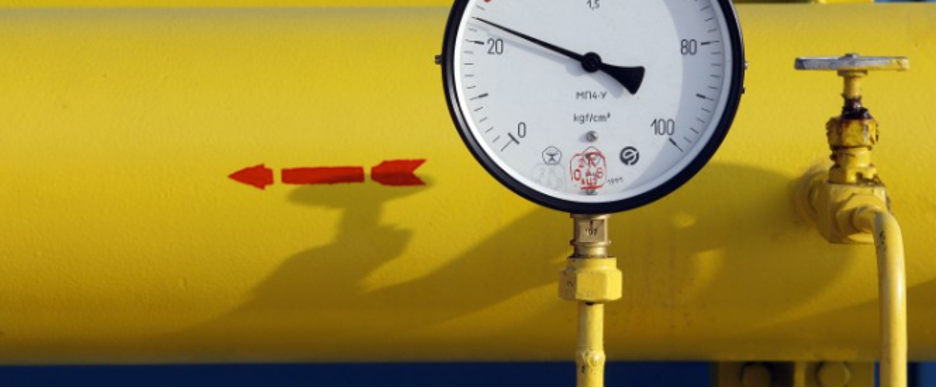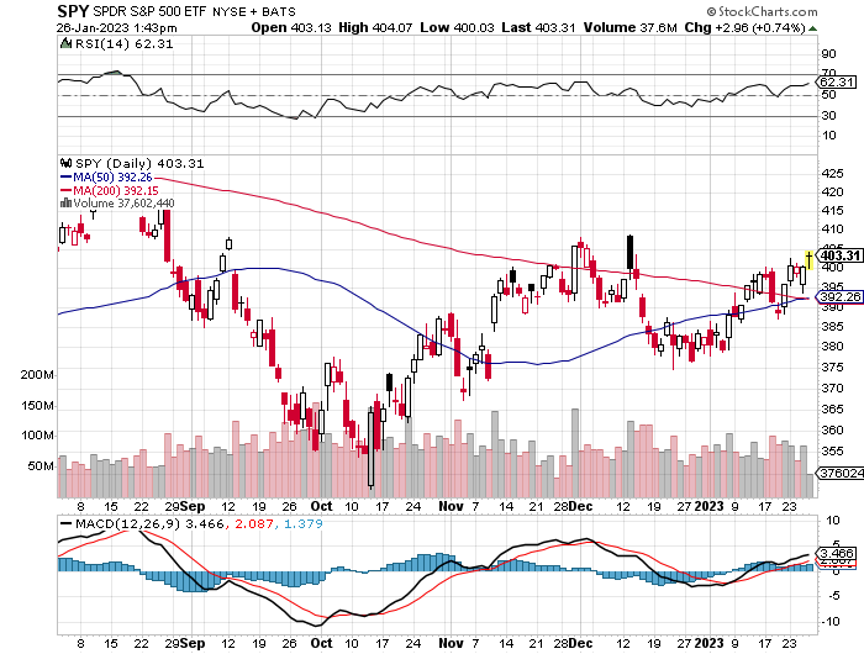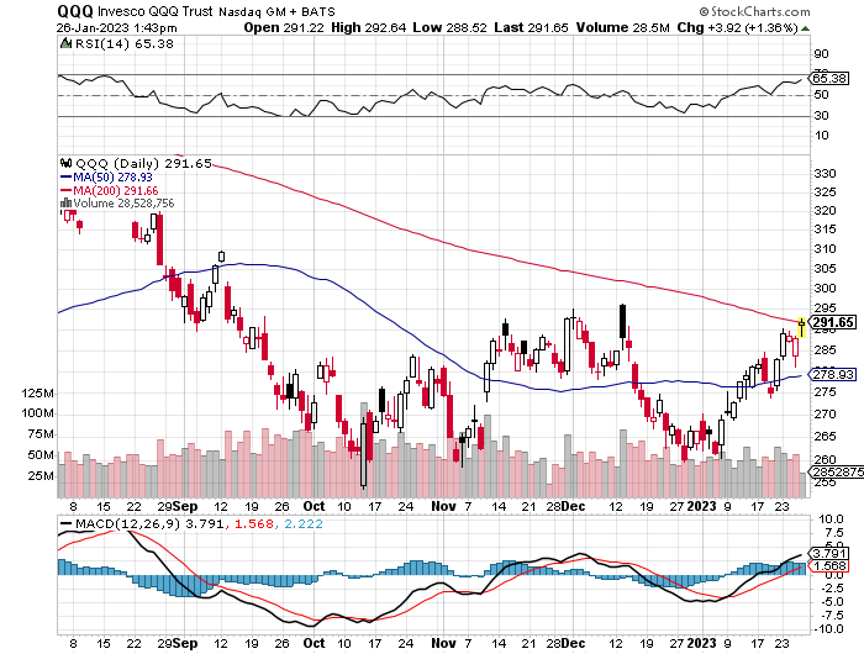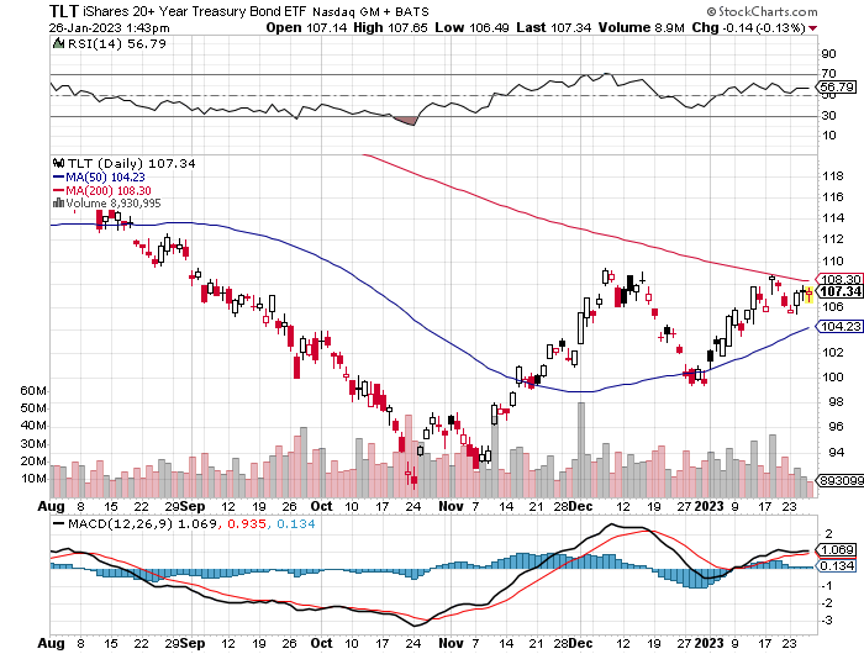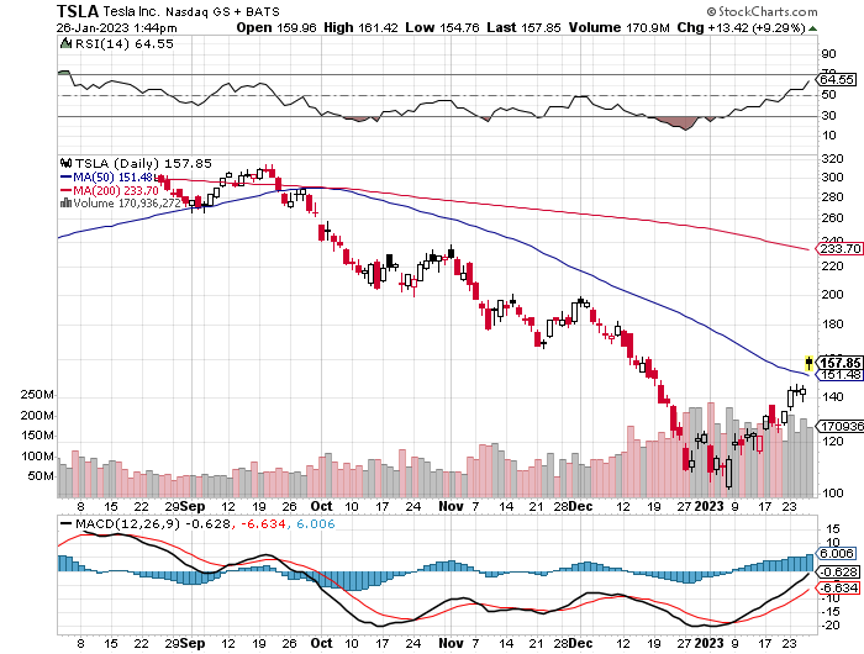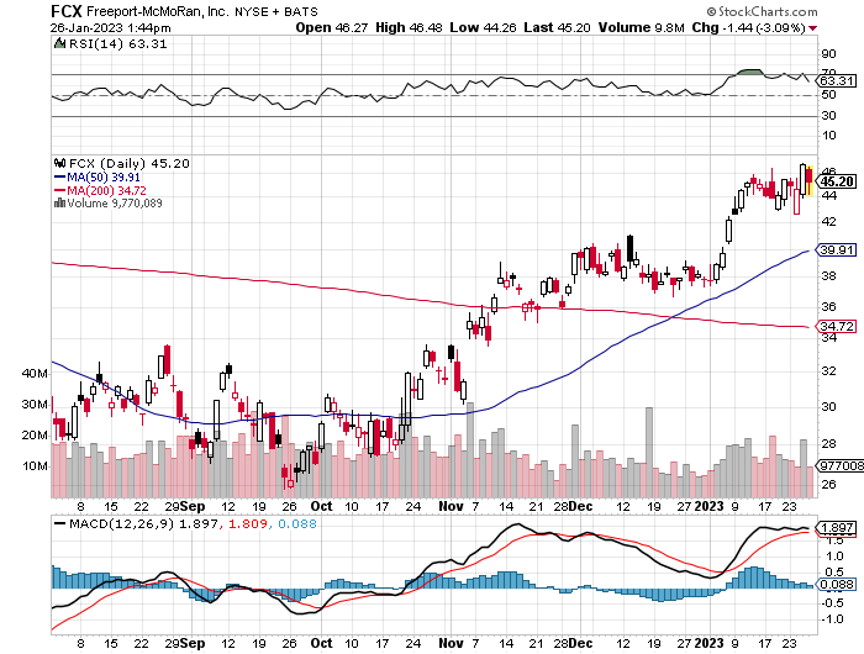Below please find subscribers’ Q&A for the March 22 Mad Hedge Fund Trader Global Strategy Webinar, broadcast from Silicon Valley, CA.
Q: I have big losses in biotech (IBB) but am a long-term believer—do you think it will recover?
A: Yes, I do. But we are still looking at the post-COVID hangover, where Biotechs rocketed for about a year. We’re simply coming off that overbought situation. In the meantime, the industry continues to generate groundbreaking discoveries at the fastest rate in history. When those translate into profit-making products, the stocks will perform, and many of them already have.
Q: Advanced Micro Devices (AMD) appears to be overbought, what are your thoughts?
A: Yes absolutely, the whole chip sector is overbought, because guess what, they benefit from falling interest rates and an economic recovery. That group will absolutely lead going into the future, and it’s hard to get into—these things just go up in a straight line. Look at Nvidia (NVDA), it has more than doubled since the October low and you barely get pullbacks. It’s looking like Nvidia is going to take over the world; we’d love to get into it but it seems like it will only be a high-risk/high-reward stock. They are now having the tailwind with Chat GPT—which everyone has to own now or go out of business—and buy Nvidia chips to make it work.
Q: Would you recommend banks and brokerages here?
A; Yes, because of the banking crisis, they’ll be the best performers as we come out of it. The end of the interest rate rising cycle is now in sight, and we are about to enter the golden age of banking. Institutions are buying stocks for that now. And your next entry point will be Friday because the pattern has been to sell off everything on Fridays in expectation of a new bank going under on the weekend. If nothing happens, then you have a big rally on Monday morning. So that you can probably play.
Q: Are there recordings of this webinar?
A: Yes, to find all past recordings, just go to www.madhedgefundtrader.com and log in.
Q: When does Intel (INTC) become a buy, if ever?
A: It’s probably a “BUY” right here. You never want to buy a tech company run by a salesman, and that’s what happened with Intel. As soon as you had a salesman guaranteeing he’d turn the company around, the stock dropped by half. So down here, it’s looking more likely that they’ll fire the head of Intel, get an engineer back in charge, and the stock should double. But clearly, it’s the only value left in the semiconductor area.
Q: Would you double up on the United States Natural Gas Fund (UNG)?
A: Yes, and I'd be doing 2-year (UNG) LEAPS. There’s no way you have an economic recovery over the next two years that will get us a double, triple, or quadruple in the price of natural gas, and (UNG) will catch that move less 35% for the contango (the 1-year differential between front month and one-year futures contracts).
Q: What’s your favorite tech stock to buy on the dip?
A: It has to be Tesla (TSLA). And I’m in the middle of writing a massive opus on the Tesla Investors Day, which included far more news and content than people realize. That's because you have journalists covering investors' day, not engineers. So I’ll get to the engineers’ and scientists view, which is much more interesting.
Q: Buy bitcoin after the financial contagion?
A: No, bitcoin is what you bought at the market top because there was nothing else to buy because everything else was so expensive. Now everything else is cheap when you can buy Apple (AAPL) at $160, Nvidia at $272 (NVDA), or Tesla (TSLA) at $200. Those are far better choices than a purely speculative asset class which you may never see again once you send in your money. That has been the experience of a lot of people.
Q: Should I sell short the Utility ETF (XLU) if investors head into growth stocks?
A: No, utilities are very heavy borrowers with big capital requirements, and also will benefit heavily from falling interest rates. Basically, everything goes up on an economic recovery. So, your short ideas were great a year ago, not so much now. Now we’re looking for long plays, and just a few hedges, like in bonds, to control risk.
Q: What's the net entry point for Freeport McMoRan (FCX)?
A: I would say here, and my target for this year for Freeport is at the very least hitting $50 again; someday we hit $100, once we get another ramp-up for EV production and the demand for copper sores accordingly.
Q: I hear China has a battery that will go 600 miles and is coming soon.
A: Tesla has a battery that will go 1,000 miles now, but it can only be recharged once. It turns out that the military is very interested in using these, converting Humvees to EVs; then you could parachute them charged batteries which you just pop in. That eliminates having to move these giant bladders of gasoline which easily explode. So yes, the 1,000-mile battery has actually been around for 10 years but can’t be mass-produced. That is the issue.
Q: How will Tesla deal with hydrogen?
A: It will ignore it. Hydrogen will never go mainstream—it can’t compete with an existing electric power grid. But there are fleet or utility applications that make sense; so other than a small, limited fleet confined to a local area, I don't see hydrogen ever catching up. And Saudi Arabia can easily convert their entire oil supply into hydrogen to create a “green” carbon-free fuel. Remember, the cost of electric power cars is dropping dramatically—at about 20% a year—so hydrogen has to keep up with that too which they’re not.
Q: Please explain a bank LEAPS.
A: You buy a call option, you sell short a call option higher up, and you do it with a maturity of one year longer, or more. That’s what makes it a LEAPS. If you want more details, just go to www.madhedgefundtrader.com, and search LEAPS and a full explanation of how to execute these will come up.
Q: What do you think of Rivian (RIVN)?
A: It’s a long-term play—they got knocked down by half on their latest $1.2 billion capital raise, which everybody knew was coming, but still seemed to surprise some traders. It’s a long-term hold, not a short term trade. That said, it’s tempting to do LEAPS on Rivian right here going out two years. The stock is down 95% from the highs.
Q: What level LEAPS do you do on JP Morgan (JPM)?
A: I sent that out to everybody last week—that would be to buy the $130 call option and sell short the $135 call option for January of 2024. That way the stock only has to go up 4% for you to make a 100% return on that investment. That’s why we love LEAPS.
Q: I had First Republic Bank (FRC) at $30, took a bath, and got rid of it. Should I have held on?
A: Yes. There's nothing wrong with First Republic's business, and that’s what's new in all of this current round of bank failures—the assets are fine. Usually when a bank goes under it’s because they extended too many dubious loans that defaulted. First Republic not only has a great loan book, but a great asset base in high-net-worth individuals. This is not a bank you would normally expect to go under. Which is why private banks are pouring money into it to save it. I’d be a buyer at the $10 level if we get down that far again. And I actually bought a little bit of First Republic myself on Monday, the meltdown day at $15, with the theory that it will get bailed out and the stock goes up ten times.
Q: Would you do vertical credit spreads on the SPDR S&P 500 ETF Fund (SPY) or Invesco QQQ ETF (QQQ) with the $2 spread?
A: No, the big money is made on single stocks, which have double or triple the volatility of indexes, and you know which single stocks to buy right now—the ones that just had a big selloff. You want more volatility at market bottoms, not less; and I would recommend doing all the financial and call spreads and LEAPS right here. They will have higher volatility and deliver much better risk/reward ratios. That is basic trading 101: you short indexes on the way down, you buy single stocks on the way up. That's what every hedge fund worth its salt does.
Q: Do you have an opinion on Zero Days to Expiration causing greater volatility?
A: Absolutely, it is—especially on Fridays. And I'm not doing these because they are basically lottery tickets. But, if it's a coin toss on whether you make money or not, and you write off the bad ones and make a nice profit on the good ones, that could be a profitable trade. I actually have several followers experimenting with that type of strategy, so I'll let you know if they make any money on it.
Q: What do you think about oil in this environment?
A: It’s discounting a recession which is never going to happen; so oil and oil plays are probably a good trade here, especially with front-month calls. I would be going for Valero Energy (VLO) and the refiners like Sinclair (DINO) and Sunoco (SUN), rather than the big producers because they have already had big moves which they have held onto mostly. Expect oil to go up—I’d be buying the commodity here (USO) and I’d be buying the United States Natural Gas Fund (UNG).
Q: What's the maximum downside in the next 30 days?
A: Well I showed you on that S&P 500 (SPY) chart at the beginning—$350 is the worst-case scenario with a deep recession, and that assumes the banking crisis doesn’t go away and gets worse. I think the banking crisis is done and getting better so we won’t test the downside, but the unanticipated can happen, so you have to be ready for anything. The non-recessionary low looks to be $375.
Q: What if you can’t do spreads in an IRA, like for iShares 20 Plus Year Treasury Bond ETF (TLT)?
A: Just buy the (TLT) outright, or buy it on 2:1 margin. (TLT) is probably a great buy around 100 or 101. ProShares has the 2X long Ultra Treasury ETF (UBT), but the fees are high, the spreads are wide, and the tracking error is large, as is standard for these kinds of instruments.
Q: When taking a position in LEAPS, how do you decide the position size per holding?
A: I send out all the LEAPS assuming one contract, then you can adjust your size according to your own experience level and risk tolerance. Keep in mind that if I’m wrong on everything, the value of all LEAPS goes to zero, so it may not be for you. On the other hand, if I am right on my one-year and two-year views, all these LEAPS will deliver a 100-120% return. You decide.
Q: Are you expecting a seasonal rally in oil?
A: Yes I am, and we’re coming off very low levels. Buy the United States Oil ETF (USO) and buy the United States Natural Gas Fund (UNG).
Q: Is a recession still on the table with all the banking crises?
A: No, if anything, it brings the end of any possibility of a recession because it’s bringing interest rate cuts sooner than expected, which brings a recovery that’s sooner than expected. And that’s why you’re getting interest-rate-sensitive stocks holding here and starting to rally.
Q: My retirement account won’t let me buy (UNG)—Are there any other good companies I can buy?
A: Yes, Devon Energy (DVN) is big in the gas area. So are Cheniere Energy (LNG) and Kinder Morgan (KMI).
Q: If the market is oversupplied with oil, why is gasoline so expensive?
A: Endless middlemen add-ons. This is one of the greatest continuing rip-offs in human history—gasoline prices always take the elevator up and the escalator down, it’s always that way. And that's how oil companies make money—by squeezing consumers. I’ve been tracking it for 50 years and that’s my conclusion. The State of California has done a lot of research on this and learned that only half of their higher prices are from taxes to pay for roads and the other half comes from a myriad of markups. Also, a lot of businessmen just don’t want to be in the gasoline retailing business and will only enter when the returns are very high. Plus, oil companies are trying to milk companies for all their worth right now because the industry may disappear in 10 years. Go electric, that’s my solution. I haven’t bought gasoline for 13 years, except for my kids. I only buy cars for my kids at junkyards and fix them up. If they want to do better they can go out and earn it.
Q: Do we need to worry about China supporting Russia in the war against Ukraine?
A: Not really, because all we have to do to cut off Chinese supplies for Russia is to cut off trade with China, and their economy will completely collapse. China knows this, so they may do some token support for Russia like send them sweatshirts or something like that. If they start a large arms supply, which they could, then the political costs and the trade costs would be more than it’s worth. And at the end of the day, China has no principles, it really is only interested in itself and its own people and will do business with anybody.
Q: What do you think about the recovery in solar?
A: What’s been going on in solar is very interesting because for the last 20 years, solar has moved one to one with oil. So, you would expect that from collapsing oil prices and more price competition from oil, solar would collapse too. Instead, solar has had tremendous moves up and is close to highs for the year. The difference has to be the Biden alternative energy subsidies, which are floating the entire industry and accelerating the entire conversion of the United States to an all-electric economy. So they've had great runs. I wouldn’t get involved here, but it’s nice to contemplate what this means for the long-term future of the country.
Q: Should I buy the airline stocks here?
A: Yes, I’d go for Delta (DAL). Again, it’s one of the sectors that’s discounting a recession that’s not going to happen. They’re going to have the biggest airline boom ever this summer as the reopening trade continues on for another year, and a lot of pent-up travel demand hits the market.
Q: Do you like platinum?
A: I do—not because of EVs but because of hydrogen. You need platinum for hydrogen fuel cells to work. That’s a brand new demand, and there’s supposed to be a shortage of half a million ounces of platinum this year.
To watch a replay of this webinar with all the charts, bells, whistles, and classic rock music, just log in to www.madhedgefundtrader.com, go to MY ACCOUNT, click on GLOBAL TRADING DISPATCH or TECHNOLOGY LETTER, then WEBINARS, and all the webinars from the last 12 years are there in all their glory.
Good Luck and Stay Healthy,
John Thomas
CEO & Publisher
The Diary of a Mad Hedge Fund Trader


